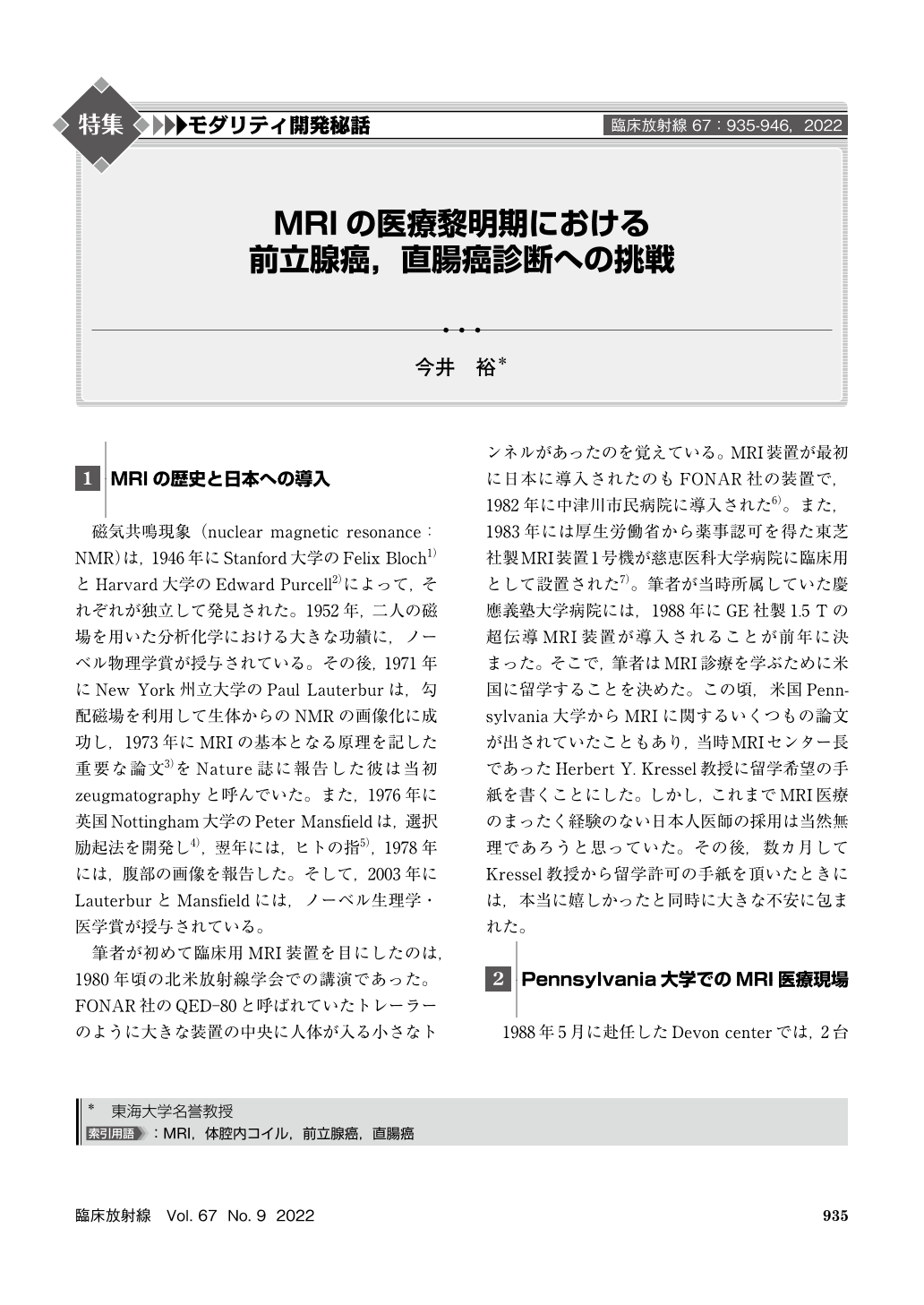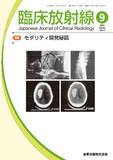Japanese
English
- 有料閲覧
- Abstract 文献概要
- 1ページ目 Look Inside
- 参考文献 Reference
磁気共鳴現象(nuclear magnetic resonance:NMR)は,1946年にStanford大学のFelix Bloch1)とHarvard大学のEdward Purcell2)によって,それぞれが独立して発見された。1952年,二人の磁場を用いた分析化学における大きな功績に,ノーベル物理学賞が授与されている。その後,1971年にNew York州立大学のPaul Lauterburは,勾配磁場を利用して生体からのNMRの画像化に成功し,1973年にMRIの基本となる原理を記した重要な論文3)をNature誌に報告した彼は当初zeugmatographyと呼んでいた。また,1976年に英国Nottingham大学のPeter Mansfieldは,選択励起法を開発し4),翌年には,ヒトの指5),1978年には,腹部の画像を報告した。そして,2003年にLauterburとMansfieldには,ノーベル生理学・医学賞が授与されている。
In 1946, Felix Bloch and Edward Purcell, working independently, discovered the phenomenon of nuclear magnetic resonance(NMR). In 1973, Paul Lauterbur theorized a method using magnetic field gradient to obtain images of the living tissues. He was calling this method “zeugmatography”. Separately, Peter Mansfield developed the method of selective excitation and create three-dimensional MR images of human finger and body in 1978. In 2003, Paul Lauterbur and Peter Mansfield shared the Nobel Prize in Physiology and Medicine.
I spent a time in the body group of Devon MRI center in the University of Pennsylvania from June 1988 to May 1989. We developed an endorectal surface coil for the prostate, which was first reported by Dr. Schnall in 1989. The increased resolution of endorectal MR imaging dramatically improved the visualization of internal architecture of the prostate and also periprostatic anatomy.
MR imaging of rectal cancer was started using the post-surgical specimen for histopathological correlation at the University of Pennsylvania. We did obtain MR images of the specimen by a hand-made surface coil and tried in many different shapes and sizes, which should be placed at suitable distance between tumor and the surface coil. First endo-luminal MR images of a patient with rectal cancer was obtained using Multi-shot RARE(Fast SE), which was developed by Dr. Higuchi, at Keio University in 1989. Endo-luminal MR imaging could improve the accuracy of rectal cancer staging and depiction of tumor growth pattern.
Clinical application of DWI for body imaging was started in Tokai University at the end of 2002. Dr. Takahara developed a whole body DWI method and it have been accepted as DWIBS(diffusion-weighted whole body imaging with background suppression)in 2004. We also studied MR imaging with apparent diffusion coefficient histogram analysis for the evaluation of locally advanced rectal cancer before and after chemo-radiation therapy(CRT)and the results showed that this method could help predict favorable response to neoadjuvant CRT.
When we first saw MR images, we had a magical connotation and felt a lot of potential for the diagnostic imaging. On the other hand, we had become frustrated with the low spatial resolution of MRI. Dr. Schnall’s motivation for developing endorectal surface coil was the depiction of prostatic capsule and periprostatic anatomy for cancer staging. Dr. Higuchi’s motivation for developing Multi-shot RARE(Fast SE)was the acquisition of T2-weighted images in a breath hold. We also studied MR imaging of rectal cancer using postsurgical specimen and simultaneously developed endo-luminal surface coil for rectal cancer in clinical use. Our motivation was to obtain the MR images that look like a microscope preparation. At the dawn of MRI medical care, we always tried to answer many clinical questions generated from daily clinical work. We really hope for further progress of MRI and for saving more lives in the future.

Copyright © 2022, KANEHARA SHUPPAN Co.LTD. All rights reserved.


